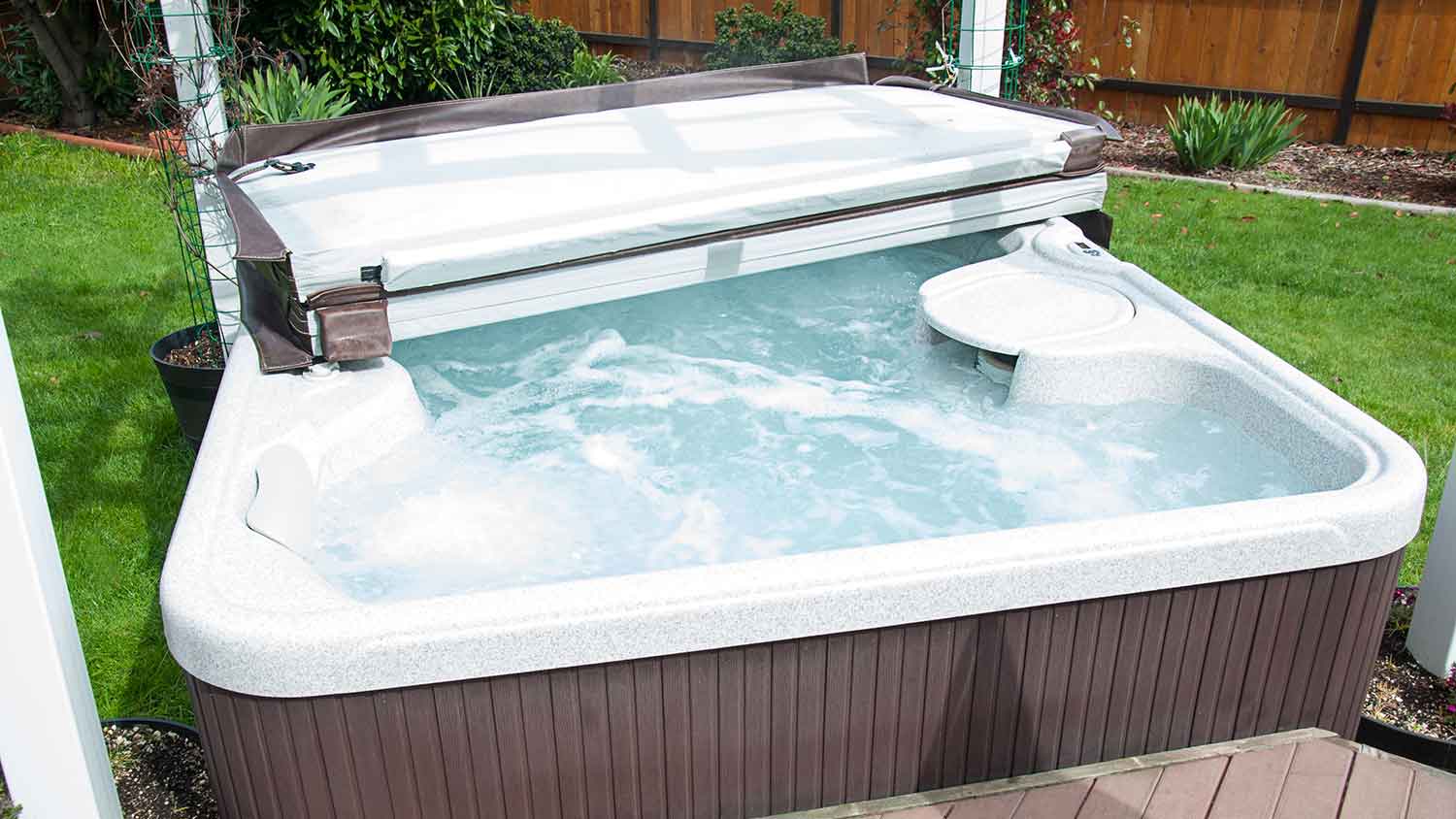
Wondering about hot tub cover costs? Learn what impacts pricing, compare materials, and discover ways to save on your next hot tub cover purchase.
Take the yuck out of your hot tub


Biofilm is a buildup of bacteria, microorganisms, and organic compounds.
You need to get rid of biofilm before you can use a hot tub.
Getting rid of biofilm is a multistep process.
You are excited for a nice soak after a long day, but wait—is there something wrong with the water in your hot tub? If you popped off the cover to discover cloudy water, then you may have a biofilm problem on your hands. You will have to cancel the hot tub session, but as soon as you get rid of the biofilm, you will be able to enjoy it once again.
It turns out that you are not the only one who likes the hot water in your hot tub, as certain bacteria can thrive in it. Biofilm is a buildup on the water surface of bacteria, microorganisms, and other organic compounds.
Biofilm forms when there is an issue with maintenance or sanitation. For example, you might have a clogged filter or a filter past its prime, or you may have forgotten to balance the water on the recommended schedule. If you decided to DIY the maintenance, you may have made a mistake during the water testing and treatment process.
If you have biofilm, you will have to do a multistep treatment to clean your hot tub thoroughly. Afterward, stick to a regular maintenance schedule to keep it at bay for good.
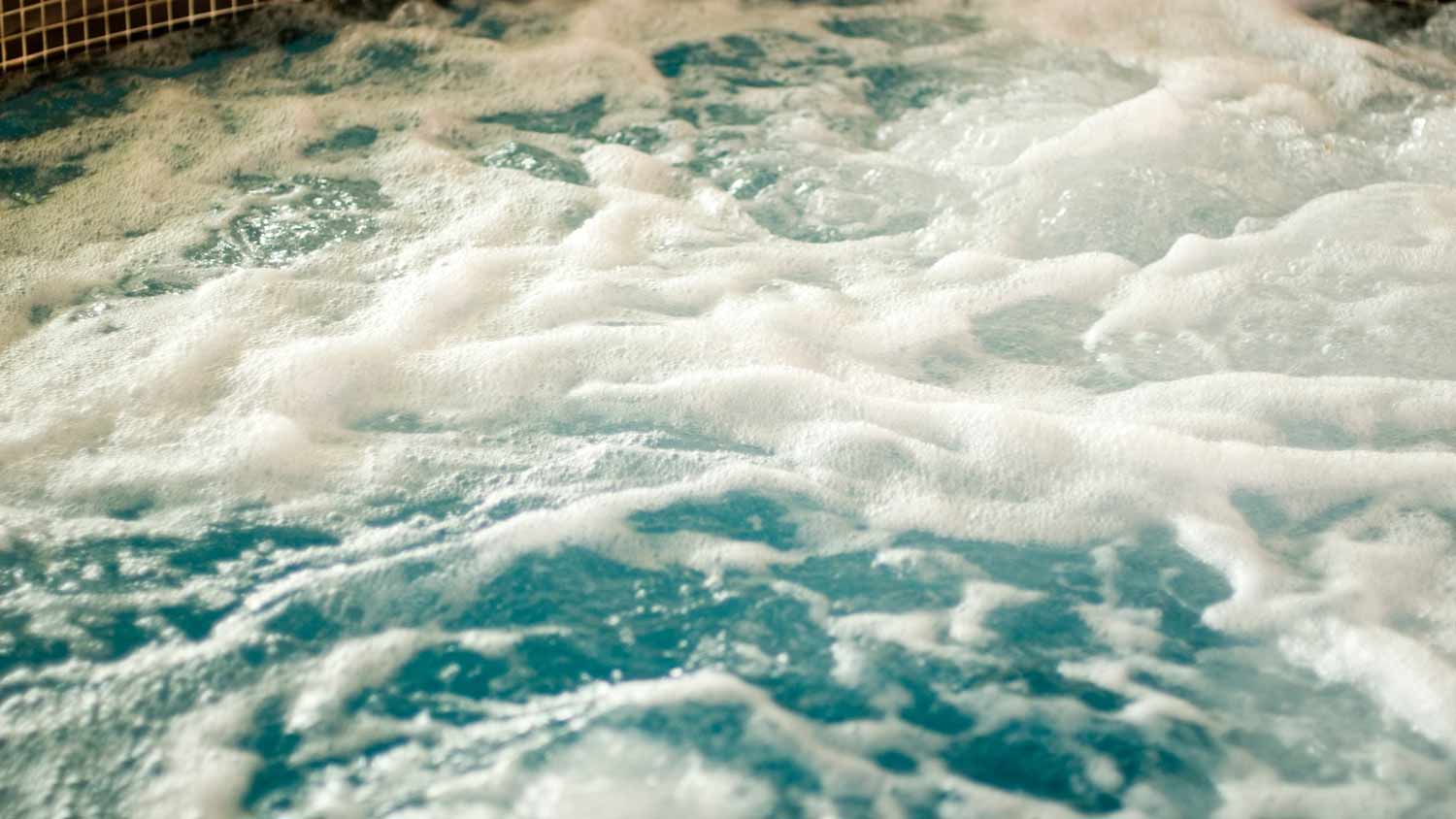
Of the different hot tub problems you might experience, biofilm is one of the easiest to spot visually. You will know there is biofilm if you notice murky, cloudy, or foamy water instead of clear water. You may also see things floating in the water, including what looks like blobs. You may notice floating bits by the water surface, jets, and skimmer. The biofilm can be white, yellow, green, pink, or black.
You may also notice a bad smell; and when you touch the water, you may realize that you have a slimy hot tub—definitely something you will want to fix.
Besides these changes in the water, you have likely been using more sanitizer than usual. This is because biofilm prevents sanitizers like bromine, chlorine, and active oxygen from killing the bacteria. So, you will end up adding more sanitizer to the water than usual, but it will not have the effect that it should.
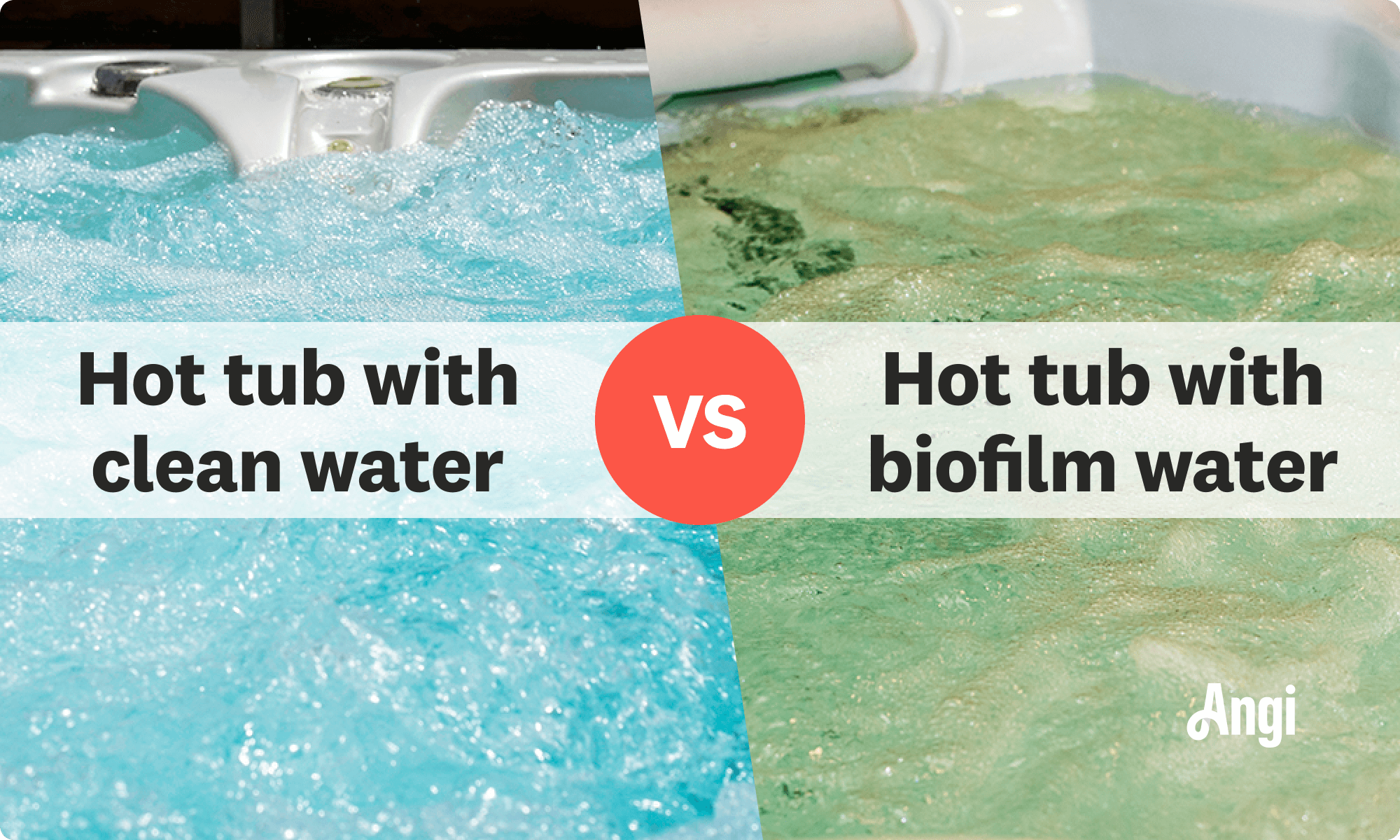
Failing to get rid of the biofilm in your hot tub can cause issues such as:
Buildup and corrosion of pipes
Damage to hot tub parts and equipment
Unstable water levels
Skin rashes and other health issues
Unstable water levels can lead to hot tub health risks. So, if you have discovered biofilm in a hot tub, you should stop using it until it gets fixed.
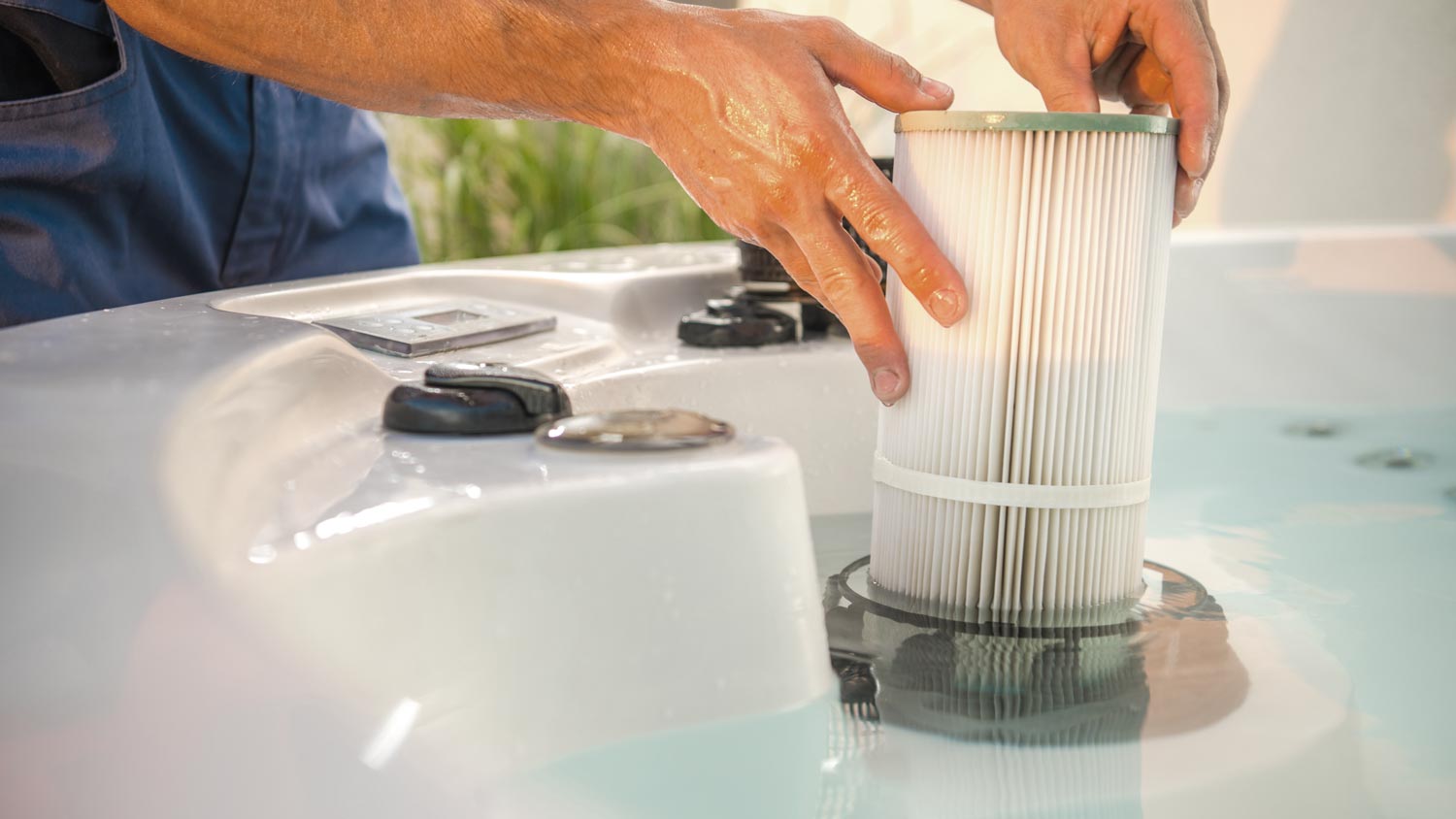
You know you have biofilm, so now it is time to get rid of it. If all of these steps seem too daunting, or if your schedule is too busy, hire a hot tub repair pro near you to take care of it.
Turn off the hot tub and remove the filter. Rinse it thoroughly and then soak it in a hot tub filter cleaner overnight. In the morning, you should rinse the filter again, let it dry, and then reinstall.
Super-chlorinating your tub will help kill all of the contaminants in the water. The goal is to increase the chlorine levels to 20 ppm for 72 hours. Regular chlorine levels are 1 to 3 ppm, so that is why it is called “super”-chlorinating.
To reach these high chlorine levels, you need to use five tablespoons of chlorine per 100 gallons of water. You might have to look up the hot tub owner’s manual to figure out how much water your tub holds, but a four- to six-person tub uses around 300 to 450 gallons.
Keep the jets, aerators, waterfalls, and valves open so the chlorine can freely move through the hot tub system.
Next, get some hot tub biofilm cleaner. Check the directions, but for most tubs you will need about a teaspoon of it. After putting the cleaner in the water, turn on the aerator and let it circulate for about 30 minutes.
The next step requires you to drain the tub. Learning how to drain your tub is fairly straightforward. Turn off the hot tub, disconnect the water supply, and drain the water using a drain valve, a submersible pump, or a wet/dry vacuum.
After you drain the hot tub, hose it down. Scrub the walls of your hot tub with a cleaning solution, and then do a final rinse.
Once you have finished all of these steps, you should install a brand new filter. This will ensure that your hot tub stays biofilm-free.
It is easier to prevent biofilm than to fix it. Here are some tips to help you do that:
Regularly balance the water.
Use biofilm remover when installing a new hot tub.
Shower and rinse off before using the hot tub.
Clean your filter weekly and deep-clean it monthly.
Circulate your hot tub water even when not in use.
Use biofilm remover preventatively.
If you do not have time to take care of all the necessary maintenance tasks, you should hire someone to do it for you. Hot tub maintenance costs $240 to $900 annually, and as you can see, it is a very good investment for the upkeep of the equipment and also to ensure the safety of the water.
Even if you hire someone to do maintenance, you should still learn how to keep your hot tub clean. Taking precautions like rinsing your swimsuits and not eating in the tub will help you to avoid problems.
From average costs to expert advice, get all the answers you need to get your job done.

Wondering about hot tub cover costs? Learn what impacts pricing, compare materials, and discover ways to save on your next hot tub cover purchase.

Discover the average hot tub maintenance cost, what impacts pricing, and how to save money. Get expert tips to keep your hot tub running smoothly all year.

Hot tub repair costs will depend on the type and severity of the issue. Our cost guide will help you decide whether to DIY or hire a professional.
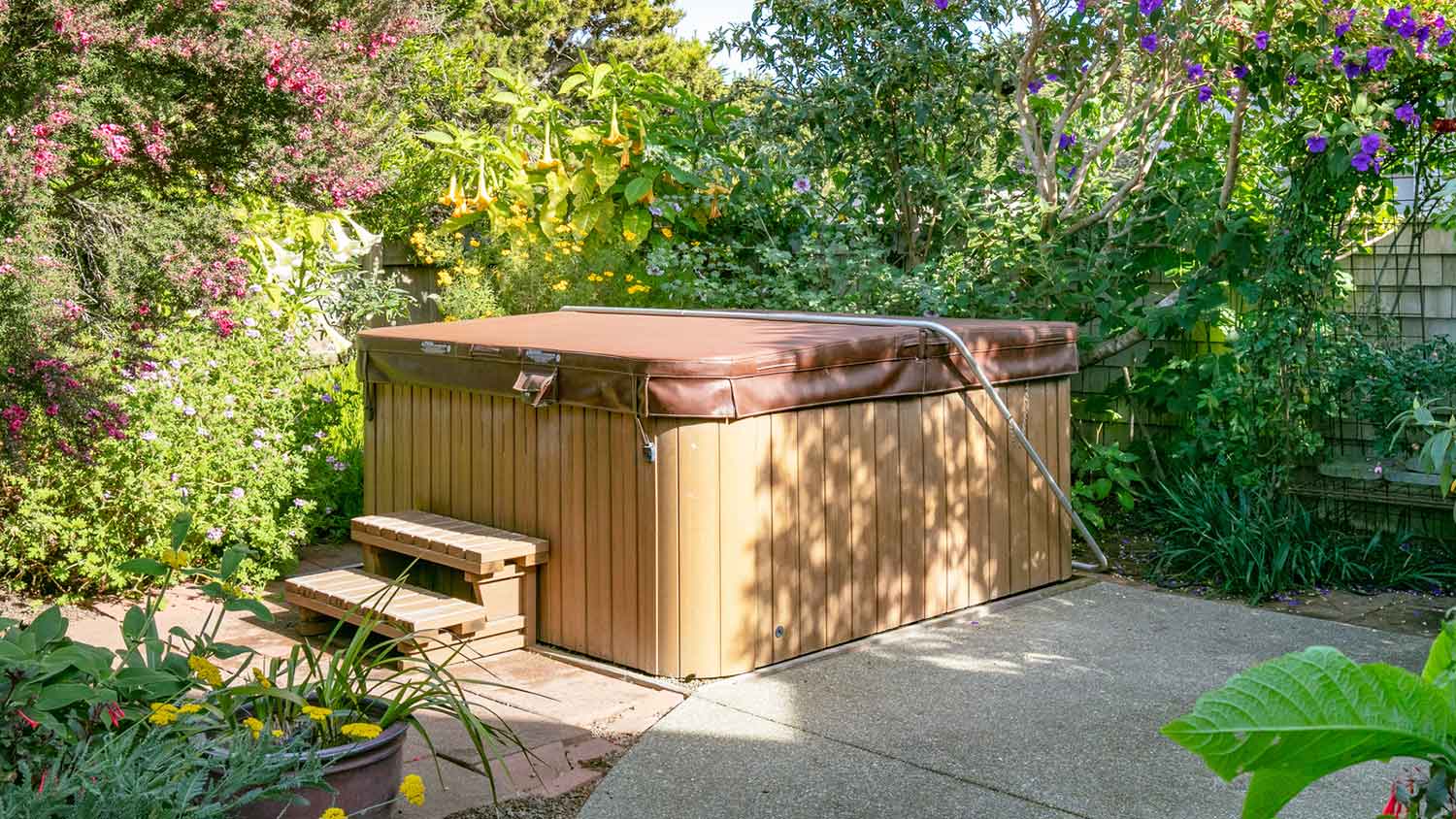
Struggling to lift the cover off of your hot tub? If you're wondering "Why is my hot tub cover so heavy," the good news is it's the cover, not you.

If your pool pump is losing prime, you’re likely facing unfiltered, dirty water. Learn why this is happening and what to do about it.

A warm soak can renew your spirits, but your hot tub occasionally needs a refresh. This guide will help you decide whether to replace or refurbish your hot tub.